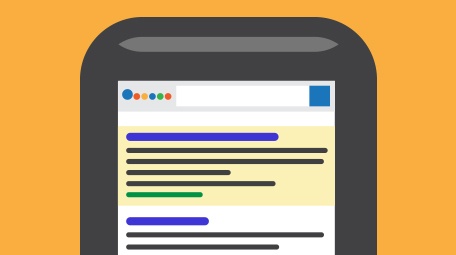Amber Kazalbash | May 7, 2015 12:29:04 PM
5 Min Read

With Mobilegeddon officially rolled out to the public, we knew that this wouldn’t be it for Google. Many have been anticipating this news for years and now it’s official: the reality is that more Google searches take place on mobile devices than on computers in 10 countries now, including US and Japan. These queries are on both browsers and mobile search apps. Since Google groups tablets with desktops, this is very indicative of mobile usage for users everywhere, and shows us how drastic the mobile channel’s influence is because of the fact that most, if not all, users have searched on these devices one way or another.
The Challenge
As the paradigm of channel search switches for engines like Google, it’s becoming more obvious that the traditional purchase funnel is no longer applicable for brands seeking to target mobile customers. We need to start finding opportunities through what Google calls micro moments: or touch points within the path to purchase that are as personalized, contextual, and as possible. As a brand, the challenge lies within creating these moments of engagement and value for customers anytime, anywhere they are.
Every brand needs to have a strong grip on what exactly customers are looking for. Jerry Dischler, a Google AdWords VP noted that “The user has this instantaneous need, and we have to be there with a great experience.” Bottom line: users need brands to be the best, most consistent providers of relevant data and value. As advertisers, you should see this new shift as a chance to change the way mobile users find you, visit your nearest locations and forge a deeper relationship with your local brand past their initial purchase.
The Solution
Judging by its search recommendation overhaul for mobile last month, Google’s solution to this challenge lies within advertising. Google has expanded its location-based tools to understand mobile ad attribution and as of this Tuesday, reconfigured search ads to fit the use-case of Mobile. These ads are closely geared to customers that are nearing the point of sale, like people reading reviews for products within a store.
Even though Google’s search ads are known to be the most effective and lucrative types in marketing, average ad prices have been declining, prompting the switch to a Mobile model. This model will better suit customers’ needs by responding to the touches and swipes of users on screen rather than clicks on a desktop. When a user has an instantaneous need in a micro-moment, brands can now seize this opportunity to be valuable when and where users need them.
In addition to responding to touches and swipes, these mobile ads will formulate in carousel listings near the top of search results. From there, users can swipe and once they click through, advertisers will pay for the traffic. In addition to the in-store retail market, expected industries that this might come into play are the automotive (dealership) and home-loan (mortgage) markets. These micro-moment searches for customers who are so close to making a decision will help convert in a way that suits their location and search channel.
These ads are now served up based on website content, rather than search keywords. With mobile users, actions on mobile often show just as much intent as branded and searched keywords. With a smaller screen, these actions can be indicative of what types of advertising would be useful to users. According to Google, with 15% of searches being new every day, advertisers need to cater to these in-moment-users more than ever.
The Experience
For national brands, location data is even more important when making a micro-moment impact on the path to purchase. Make sure that the small location data you are pushing out is just as powerful as the big consumer data that your advertising efforts are bringing in. We suggest that you start making your location data as useful and actionable as possible by establishing a firm database of location information and leveraging all of your web properties with it.
Make your location information as widely dispersed as possible, claiming on relevant directories and syndicating to the right channels that fit the needs of your hyper-local customers. With Internet of Things technologies slowly gaining way in the consumer space, this is also an opportunity to become an early adopter of IoT advertising and getting even more personalized on the path to purchase. Your data needs to be simple and actionable so that your customers can view it in ads and make clear-cut decisions on how to visit your brick and mortar locations.
With the end of spring and summer holidays on the way, isn’t it time that your brand makes the most out of its data and advertising? Get your free trial of Brandify to learn how you can start advertising in the moment to your customer!

Social Media Specialist at Brandify. Home is where the Wifi is.
Offer Post Justifications Spotted in Local Results
Oct 4, 2021 8:47:46 AM
Monday Memo: More than Brands and Influencers, Consumers Trust Each Other
Sep 27, 2021 7:56:34 AM
Monday Memo: Google Adds “Latino-Owned” to GMB Identity Attributes
Sep 20, 2021 7:58:58 AM
Monday Memo: New Study Shows 94% of Consumers Use Online Business Directories
Sep 13, 2021 7:16:55 AM
Monday Memo: The Page Experience Update Has Fully Rolled Out
Sep 6, 2021 7:43:45 AM